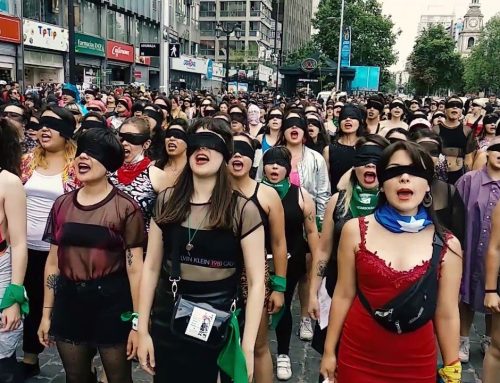Some critiques of Disney’s recent film “Maleficent” are centered on disbelief and shock regarding elements of the story that aligned with sexual assault and survivor narratives. Some have expressed concern that the scene in which Maleficent is drugged by her lover and wakes up with her wings mutilated/cut off is rooted in rape themes and therefore too heavy for young audiences. Others have missed the rape themes altogether and have expressed distaste that “rejection from a man” serves as the catalyst of the story and Maleficent’s reason for being angry and revenge seeking. Many people have expressed that the scene and larger story line have resonated with their own survivor stories in a way that is validating and deeply moving. Finally, the star actress and writer of the film have openly confirmed that the survivor narrative and hinted sexual violence were intentional.
While it is important to critically discuss when elements of rape culture are incorporated in a film or story line, or in the case of Maleficent a retelling of a fairy tale, it must be noted that this is not the first time that sexual violence has surfaced in a Disney film. Some examples may include: Dinsey’s Lady and the Tramp, and particularly a scene in which “lady” runs out of the house in the middle of the night and is cornered in an ally by a group of street dogs. The scene heavily implies the notion of a young and innocent woman being vulnerable to gang rape when outside of the home at night. Another example is in Disney’s Hunchback of Notre Dame, in which a Gypsy woman named Esmeralda is victimized by sexual advances and torture by the minister of justice, Claude Frollo. Esmeralda falls into the narrative of a seductress and also the Madonna in need of rescuing; all themes that are complex and yet present in a children’s animated film. Maleficent and many Disney movies such as Pocahontas, Atlantis, The Road to Eldorado, and The HunchBack of Notre Dame depart from and delve into narratives about eugenics, colonization, and historical genocide…and it must be noted that sexual violence is inherent to those narratives. When it comes to the tragic scene in Maleficent in which she encounters a form of violation, it is important to note that the scene is meant to be devastating and is in no way downplayed or normalized. While this particular scene and the storyline are indeed intense, the story does not rely on a graphic rape scene to communicate the message. The scene goes just far enough to capture the trauma associated with being betrayed and violated by someone we trust.
While there has been much speculation and discussion surrounding what some call the “rape scene” in Maleficent, there seems to be little discussion of the feminist and queer undertones throughout the film. Many themes in Maleficent deal with patriarchy and resistance, and thus the “rape” scene is a part of this larger context. One simple example is that Maleficent is described as a spirit “that one could perceive to be a girl” hinting at tension between a chosen gender identity and an essentialized gender identity. Maleficent’s world is in direct contrast to the patriarchal monarchy that seeks to conquer the land and treasures of her community. Further, in this version of the fairy tale, Maleficent becomes Aurora’s godmother, and only the love and compassion that Maleficent develops for the young princess can break the evil spell that Maleficent cursed upon her. The relationship between Maleficent and the man who became king after cutting off her wings is threaded with extreme intimidate partner violence, including multiple attempts at intimate partner homicide which are also related to sexual assault. While these elements are explicit in the film and many other Disney movies, it is symbolism about sexual assault and survivor narratives that people are taking issue with rather than graphic violence or overtly sexist portrayals of women and girls.
While many films depict elements of sexual violence, few recognize or intentionally incorporate these themes for the purpose of challenging them or engaging with them in a direct and compassionate manner. Through a critical lens it seems that there can be a stark difference between a rape narrative that is an honored part of a story versus a rape scene that is present for shock value and entertainment. In the case of Maleficent the victim/survivor narrative serves a purpose in recognizing these themes as a part of our history, mythology, reality, and collective responsibility.





Leave A Comment
You must be logged in to post a comment.